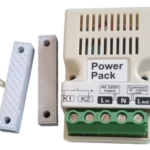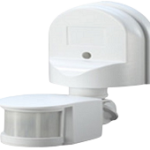1 LEAP Technologies today has become a renowned name in the field of Air Curtain Sensor/Energy Saving Sensors. With an Expert & an experienced team 1 LEAP always strives to get quality assured products for its clients. All our products are thoroughly checked and only then are dispatched from our warehouse.
Application Areas For Air Curtain Sensors
Restaurants
Cold Storage
Store Rooms
Factories
Production Area
QC Room
Warehouse
What are Air Curtain Sensor?
Air Curtain Sensors is a device which is capable of controlling (ON/OFF) an Air Curtain automatically, either through motion or by opening and closing of door.
How does an Air Curtain Sensor work?
Air Curtain Sensors comes in two variants, either they are activated by motion or by opening and closing of door. Sensors that are activated by motion are normally PIR Motion Sensors, which switches ON an Air Curtain when some moving body comes in its range, and switches OFF the curtain when the the moving body gets out of the range. On the contrary the other type of sensors uses magnetic switches for auto ON/OFF of Air Curtain, when the door is opened, Air Curtain switches ON, as distance is created between the magnetic switches and when the door is closed the Air Curtain switches OFF, as both the magnetic switches again come in close proximity to each other.
Advantages :
- Air Curtain Sensors are a very effective product for energy saving.
- Sensor switches ON the Air Curtains only when required.
- When not in use Air Curtain remains in switched OFF mode.
- Installing Air Curtain Sensors increases the life of an Air Curtain.
Switches ON only when required, Air Curtain Sensors are really a very effective product for Energy Saving. Increases life of an Air Curtain.


